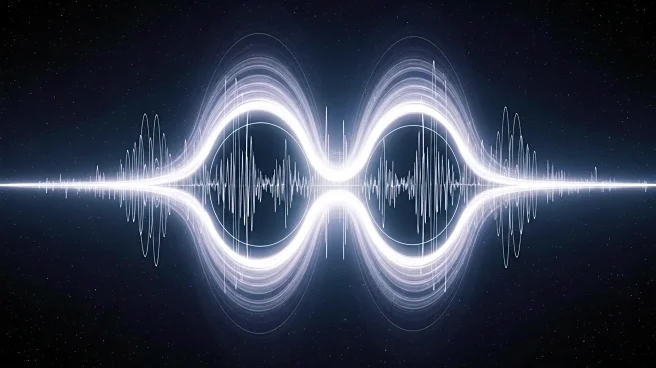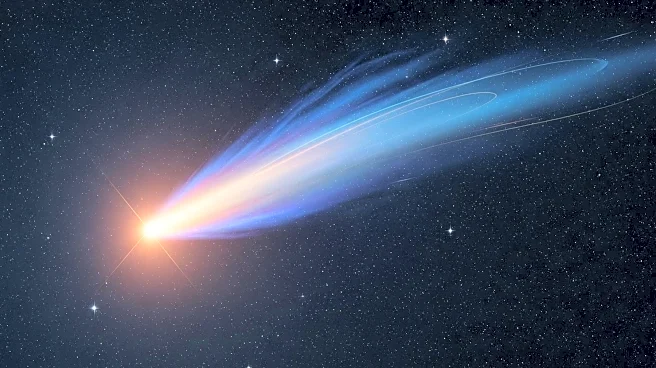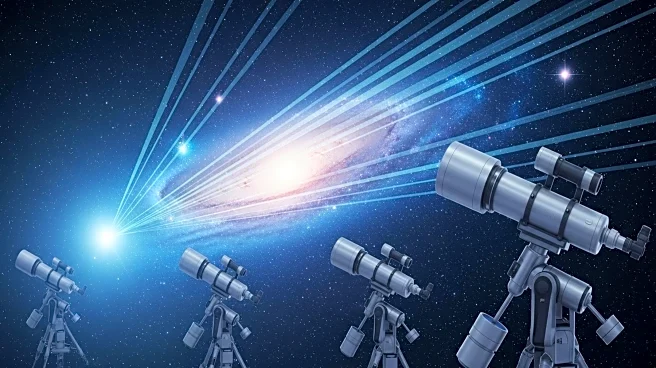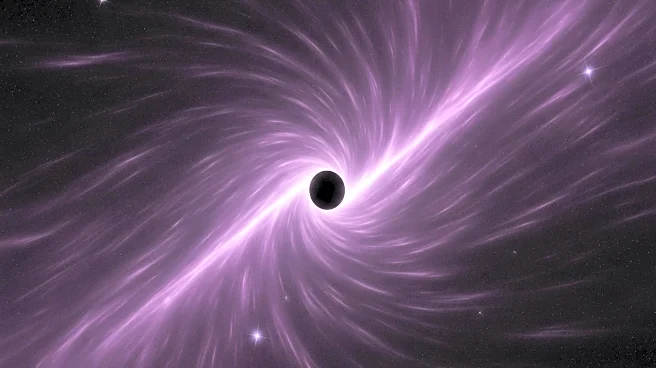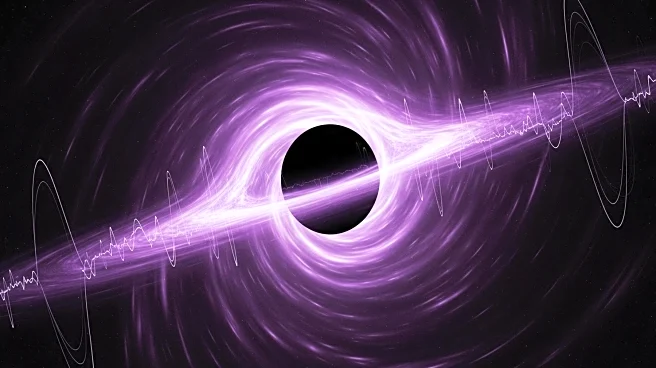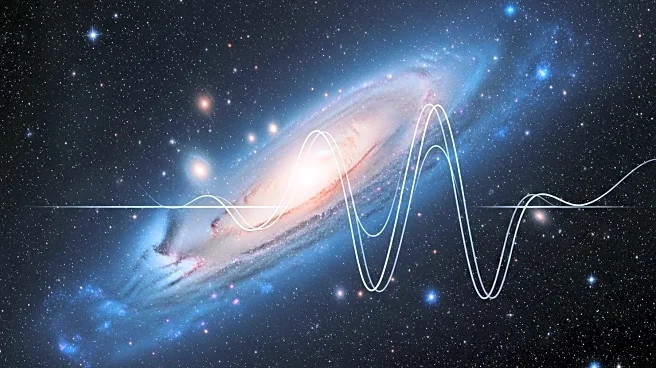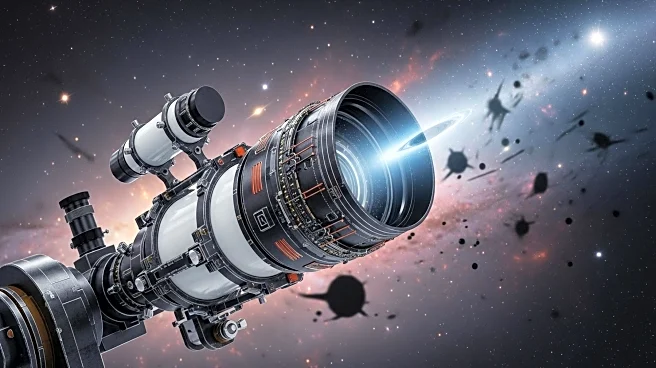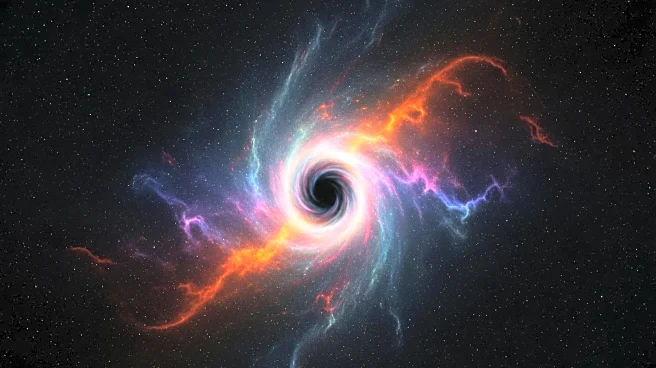What's Happening?
Astrophysicists have successfully measured the recoil resulting from the merger of two black holes, marking a significant advancement in the study of gravitational waves. The event, known as GW190412, involved a black hole eight times the mass of the Sun colliding with another black hole 30 times the mass of the Sun, located 2.4 billion light-years away. The research team utilized data from the Advanced LIGO and Virgo gravitational wave detectors to analyze the dynamics of the merger, observing the resulting black hole being propelled at thousands of miles per second. This study provides unprecedented insights into the turbulent dynamics of black hole mergers, with the findings published in Nature Astronomy.
Why It's Important?
The ability to measure the recoil from black hole mergers offers a deeper understanding of the complex interactions and dynamics involved in such cosmic events. This research could pave the way for further studies using gravitational waves and electromagnetic signals to explore black hole mergers in dense environments. The findings have implications for astrophysics, potentially enhancing our knowledge of how black holes influence their surroundings and contribute to cosmic evolution. The study also demonstrates the capabilities of gravitational wave technology in reconstructing the motion of distant objects, highlighting its importance in advancing space science.
What's Next?
Future research may focus on studying other black hole mergers using the combined approach of gravitational waves and electromagnetic signals. Scientists aim to explore the potential for detectable electromagnetic signals, known as flares, which occur as remnant black holes traverse dense environments. This could lead to a more comprehensive understanding of black hole behavior and their impact on the universe. The ongoing development of gravitational wave technology will likely continue to provide valuable insights into cosmic phenomena.


